Cayman Islands
When Christopher Columbus sighted the Cayman Islands in 1503, he named them Las Tortugas after the numerous sea turtles swimming in the surrounding waters. The soft sandy beaches were perfect nesting ground for millions of Green Turtles. Turtle meat soon became the islands’ primary export. So many turtles were hunted over the next few hundred years that their population was severely depleted. Meanwhile, the islands were renamed The Cayman Islands for the marine crocodiles living in the mangroves. In 1585, Sir Francis Drake described the caymans as “edible.” Over time, many of the mangroves were cleared for development and firewood. Today, there is one captive cayman left on the island.
In my four nights on Grand Cayman, I met accountants, lawyers and well-heeled British tourists who come here for snorkeling and scuba diving. Some of these folks pay $1000-2000 per night to stay at the Ritz (shown above). I stayed at an affordable AirBnB and rode public buses with Jamaican housekeepers.
One can judge the wealth of a place from its cars, its streets and its fashions. Grand Cayman’s streets are clean and well-maintained. Its restaurants are filled with chic people. Everyone speaks the King’s English. Life is comfortable here.
George Town, the capital and only city, is a good place to get a $25 lunch and watch cruise ships come in and out of the harbor. While I was in George Town, the first cruise ship arrived here since the start of Covid. For an island that relies heavily on tourism, this could be a good thing. Although the Caymans expect to see as many as 11,594 cruise passengers per day in the coming months, there are mixed feelings about cruise ships. Cruise passengers don’t really spend much money on shore. And two years ago, it was the cruise ships that brought Covid to the Caymans.
Financial services are the primary export of the Caymans. Everything else is imported. This is a consumer society as evidenced by the fact that the highest point on Grand Cayman is the garbage dump, known as Mount Trashmore. While many islands around the world have implemented municipal recycling and switched to biodegradable packaging, the Cayman Islands have been slow to do so. Part of the problem may be that a multi-billionaire named Kenneth Dart owns about 25% of the real estate in the Cayman Islands as well as the Dart Container Corporation, the world’s largest manufacturer of single-use foam cups and containers. The Dart Corporation recently signed a 25-year deal to burn the garbage to generate electricity. I’ll be following this environmental story, hoping that it has a happy ending.

For me, the best reason to visit the Cayman Islands is to visit the Cayman Turtle Center. Although originally established in 1968 to produce turtle meat for consumption, the Center has morphed into a research, education and conservation site where turtles are bred for release into the wild. Depending on the season, tourists can view Green Turtles mating, laying eggs, incubating, hatching or being released. The Center is the only facility to ever breed Green Turtles in captivity. Turtles released from the Center are about 100 times more likely to survive their first week in the wild than turtles hatched on a beach. Today, the number of turtle nests has increased and sightings of Green Turtles in the Caymans have become a common occurrence. When I went snorkeling, the first creature I saw was a Green Turtle.
As for Covid travel restrictions, getting into the Cayman Islands was much more rigorous than Belize or El Salvador. The Caymans require every visitor to apply for a Travel Certificate which must be approved in advance by the CI government. This is a detailed form, filled in on-line, for which a vaccination record, a negative antigen test and proof of Covid travel insurance must be uploaded. To board my plane to the Caymans, I had to show all these documents for the QR codes to be scanned. I was also asked for proof of an on-going or return flight reservation. On my arrival in the Caymans, the same process was repeated. I was glad to be thoroughly prepared. However, these sorts of travel restrictions take some of the fun out of island hopping and make spontaneous travel difficult. Travel used to be so easy back in the good ole days … like in 2019.

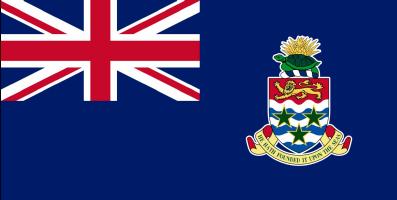


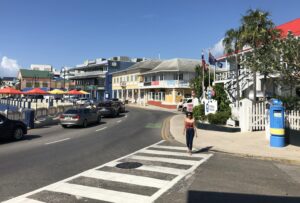
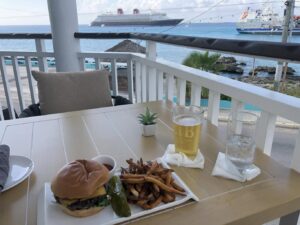

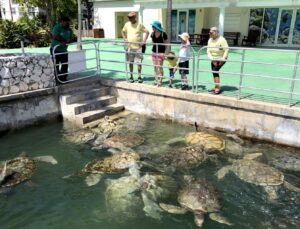
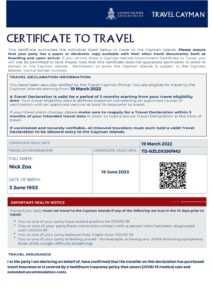
a most extravagant, once-in-a-lifetime experience is the submarine going down 800 feet out of Georgetown if it’s still operating.
Unfortunately not anymore, but the day and night submarine experience was another fab way to see the marine life.
Grand Cayman has changed a lot since I started visiting in 2004. It is a bit worrying, with all the building taking place, so quickly, the island will lose its original character. If they keep going it’ll be the expensive version of Benidorm, of the Caribbean
Nick, your description of the Caymans fits perfectly with its reputation as the ultimate tax haven and place to hide or launder money. Yesterday, coincidentally, I heard a presentation about capital flight from Africa; hidden profits, bribe money, assorted other graft, etc. As everyone knows, the Caymans are a fine place to park such funds safely. No wonder the place is clean and organized; the government can afford it.
Interestingly, the #2 country for hiding such funds is, no kidding, the United States of America.
Hey Nick. Interesting read. Hope you have more good adventures in 2022. None will be wilder than our 50th reuinion on April 22-23. Wild because none of us has done this before! Hope you can come.